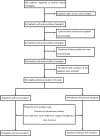Cumulative risk of developing a new symptom in patients with primary biliary cholangitis and its impact on prognosis
- PMID: 35928695
- PMCID: PMC9344586
- DOI: 10.1002/jgh3.12789
Cumulative risk of developing a new symptom in patients with primary biliary cholangitis and its impact on prognosis
Abstract
Background and aim: Symptoms of primary biliary cholangitis (PBC) frequently impair one's quality of life (QOL). Nonetheless, with improved treatment, the prognosis of PBC also improves. QOL plays an important role in patients with PBC. In this study, we aimed to reevaluate the transition of new symptom development in PBC and its predictive factors.
Methods: This retrospective multicenter study enrolled 382 patients with PBC for symptom analysis. The impact of a newly developed symptom on PBC prognosis was investigated by Kaplan-Meier analysis with propensity score matching and logistic progression analysis.
Results: The cumulative risk of developing a new symptom after 10 and 20 years of follow-up was 7.6 and 28.2%, and specifically that of pruritus, which was the most common symptom, was 6.7 and 23.3%, respectively. In Cox hazard risk analysis, serum Alb level (hazard ratio [HR], 1.097; 95% confidence interval [CI], 1.033-1.165; P = 0.002), the serum D-Bil level (HR, 6.262; 95% CI, 2.522-15.553, P < 0.001), and Paris II criteria (HR, 0.435; 95% CI, 0.183-1.036; P = 0.037) were significant independent predictors of a new symptom. Kaplan-Meier analysis showed that the overall survival and liver-related death were not significant between patients with and without a new symptom.
Conclusion: The cumulative risk of new symptom development is roughly 30% 20 years after diagnosis and could be predicted by factors including serum albumin levels, serum D-Bil level, and Paris II criteria.
Keywords: cholangitis; propensity score; quality of life; serum albumin.
© 2022 The Authors. JGH Open published by Journal of Gastroenterology and Hepatology Foundation and John Wiley & Sons Australia, Ltd.
Figures



References
-
- Takamura M, Matsuda Y, Kimura N et al. Changes in disease characteristics of primary biliary cholangitis: an observational retrospective study from 1982 to 2016. Hepatol. Res. 2020; 51: 166–75. - PubMed
-
- Nakano T, Inoue K, Hirohara J et al. Long‐term prognosis of PBC in Japan and analysis of the factors of stage progression in asymptomatic PBC. Hepatol. Res. 2002; 22: 250–60. - PubMed
-
- Long RG, Scheuer PJ, Sherlock S. Presentation and course of asymptomatic primary biliary cirrhosis. Gastroenterology. 1977; 72: 1204–7. - PubMed
-
- Younossi ZM, Bernstein D, Shiffman ML et al. Diagnosis and management of primary biliary cholangitis. Am. J. Gastroenterol. 2019; 114: 48–63. - PubMed
LinkOut - more resources
Full Text Sources
Miscellaneous

